
International Journal of Wireless Information Networks
Scope & Guideline
Connecting Ideas, Advancing Wireless Innovation
Introduction
Aims and Scopes
- Wireless Communication Technologies:
The journal covers a broad spectrum of wireless communication technologies, including 5G, 6G, and beyond, with a focus on practical applications and theoretical advancements. - Network Security and Privacy:
Research related to security protocols, privacy issues, and intrusion detection systems in wireless networks is a core area of focus, reflecting the increasing importance of cybersecurity in wireless communications. - Energy Efficiency and Optimization:
Many studies emphasize methods for improving energy efficiency in wireless networks, including energy-efficient routing protocols and resource allocation strategies, which are vital for sustainable network operations. - Machine Learning Applications:
The integration of machine learning techniques in wireless networks, such as for anomaly detection, user pairing, and spectrum management, is a significant theme, showcasing the journal's commitment to leveraging AI in communications. - Spectrum Management and Allocation:
Research on dynamic spectrum access, cognitive radio networks, and interference management highlights the journal’s emphasis on optimizing spectrum utilization in increasingly crowded wireless environments. - Sensor Networks and IoT:
The journal includes extensive research on wireless sensor networks (WSNs) and the Internet of Things (IoT), focusing on their design, deployment, and operational challenges.
Trending and Emerging
- Intelligent Reflecting Surfaces (IRS):
Research on IRS is gaining momentum as a means to enhance wireless communication performance through improved signal quality and coverage, particularly in the context of 5G and 6G networks. - Underwater and Multi-hop Communication Systems:
There has been a notable increase in studies focusing on specialized communication systems, such as underwater acoustic networks and multi-hop wireless sensor networks, addressing niche applications and their unique challenges. - Federated Learning and AI Integration:
The application of federated learning and AI in wireless networks is emerging as a significant theme, highlighting the importance of decentralized learning approaches in enhancing network intelligence and efficiency. - Healthcare Monitoring and Biomedical Applications:
Research intersecting wireless networks and healthcare, particularly in remote monitoring and data transmission for biomedical applications, is increasingly prevalent, reflecting the growing importance of health technology. - Energy-Efficient Network Design:
With the global focus on sustainability, there is a rising trend towards developing energy-efficient protocols and algorithms that optimize resource usage in various wireless communication scenarios. - Cognitive Radio and Spectrum Sharing:
The exploration of cognitive radio technologies and dynamic spectrum sharing continues to expand, emphasizing the need for adaptive solutions in increasingly congested wireless environments.
Declining or Waning
- Traditional Network Protocols:
Research on conventional network protocols, such as older routing algorithms and MAC protocols, has decreased as the community shifts towards more innovative and adaptive solutions tailored for modern applications. - Basic Theoretical Studies:
There appears to be a waning interest in purely theoretical studies without practical applications, as recent publications lean more towards empirical research and implementations that address real-world problems. - Static Wireless Systems:
Themes focused on static wireless systems and architectures have declined, reflecting a growing trend towards dynamic, flexible, and mobile solutions that cater to the needs of contemporary communication environments.
Similar Journals
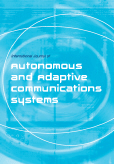
International Journal of Autonomous and Adaptive Communications Systems
Driving Insights in Autonomous Systems and Communication EngineeringInternational Journal of Autonomous and Adaptive Communications Systems, published by INDERSCIENCE ENTERPRISES LTD, serves as a vital platform for researchers and professionals engaged in the dynamic fields of autonomous systems and adaptive communication technologies. Since its inception in 2008, this peer-reviewed journal has contributed to the advancement of knowledge within the realms of Computer Science and Electrical and Electronic Engineering, albeit currently positioned in the Q4 quartile, suggesting substantial opportunities for growth and influence within these disciplines. With an emphasis on innovative research tackling challenges in autonomous communication frameworks, the journal invites submissions that explore the convergence of various technologies and their applications. While the journal does not offer open access, it remains a significant resource for academia and industry at large, facilitating collaboration and dialogue among emerging scholars, seasoned experts, and applied practitioners in the UK and beyond. The journey of this journal from 2008 to its ongoing publications through 2024 reflects a commitment to fostering academic discourse in this essential area of study.
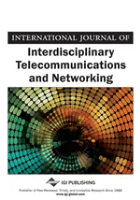
International Journal of Interdisciplinary Telecommunications and Networking
Connecting Disciplines, Advancing TechnologiesThe International Journal of Interdisciplinary Telecommunications and Networking, published by IGI Global, serves as a pivotal resource for researchers, professionals, and students in the fields of telecommunications and networking. With an ISSN of 1941-8663 and an E-ISSN of 1941-8671, this journal aims to bridge the gap between various disciplines, presenting cutting-edge research and innovative solutions that address contemporary challenges in these rapidly evolving fields. Although currently not indexed for Open Access, the journal seeks to foster an inclusive platform for interdisciplinary dialogue, encouraging contributions that explore the intersections of technology, policy, and practice. As a dynamic publication, it aspires to enhance the understanding of telecommunication systems and their impact on society, making it an essential addition to the library of any scholar or practitioner looking to stay at the forefront of technological advancements.

ICT Express
Advancing the Frontiers of Technology and InnovationICT Express is a leading open-access journal published by Elsevier that has established itself at the forefront of the fields of Artificial Intelligence, Computer Networks and Communications, Hardware and Architecture, Information Systems, and Software. Since its inception in 2015, this South Korea-based journal has provided a vital platform for disseminating innovative research and practical applications across these rapidly evolving domains. With an impressive impact factor and consistently high Scopus rankings—placing it in the top quartiles of its categories—it attracts contributions from both seasoned experts and emerging scholars. Current access options ensure that groundbreaking findings are readily available to a global audience, thus fostering collaboration and advancement in technology and computational sciences. As ICT continues to reshape various industries, the significance of research published in ICT Express is crucial for staying ahead in the digital landscape.
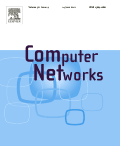
Computer Networks
Unveiling Breakthroughs in Network CommunicationsComputer Networks, a prestigious journal published by Elsevier, stands at the forefront of the field of computer networking and communications. Established in 1978, this journal has consistently provided a robust platform for the dissemination of high-quality research, currently holding a Q1 ranking in its category as of 2023, specifically within the Computer Science - Computer Networks and Communications sector, placing it in the top 10% of journals in its field (ranked #38 out of 395). With a focus on innovative networking technologies and fundamental theories, Computer Networks showcases original research articles, comprehensive reviews, and significant advancements that drive the academic community and industry practices forward. Although it follows a non-open access model, it remains widely accessible through various academic databases, ensuring that professionals, researchers, and students can engage with its valuable content. The journal's commitment to excellence contributes to its high impact factor, solidifying its role as an essential resource for those aiming to stay at the cutting edge of networking research.
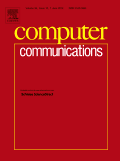
COMPUTER COMMUNICATIONS
Connecting Scholars through High-Impact ResearchCOMPUTER COMMUNICATIONS is a premier journal published by Elsevier, covering cutting-edge research in the field of computer networks and communications. With an impressive 2023 Scopus ranking placing it in the 95th percentile and classified as Q1 in its category, this journal embodies the forefront of technological advancement and scholarly excellence. Since its inception in 1978 and poised to continue until 2024, COMPUTER COMMUNICATIONS serves as an essential platform for disseminating high-impact research that advances our understanding of computer networking protocols, architectures, and applications. Although it is not an open-access publication, the journal provides various access options to ensure that its findings are widely circulated among researchers, professionals, and students. Through rigorous peer review and a commitment to fostering innovation, COMPUTER COMMUNICATIONS plays a vital role in shaping the future of communication technologies.
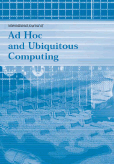
International Journal of Ad Hoc and Ubiquitous Computing
Advancing the Frontiers of Computing InnovationThe International Journal of Ad Hoc and Ubiquitous Computing, published by InderScience Enterprises Ltd, is a premier platform dedicated to advancing the fields of computer networks, communication systems, hardware, and software architecture. Since its inception in 2005, this journal has served as a critical resource for researchers, professionals, and students aiming to explore the intricate dynamics of ubiquitous computing and ad hoc networks. Though currently not an open-access journal, its scholarly contributions are well-recognized, as evidenced by its rank in the Scopus database, which places it within the lower quartiles of its respective categories. With an increasing focus on innovative solutions in computer science, the journal aims to facilitate knowledge dissemination and encourage interdisciplinary collaborations. Researchers are particularly drawn to the journal for its comprehensive coverage of emerging technologies, making it an invaluable asset in a world increasingly reliant on sophisticated communication infrastructures. As it continues to thrive towards 2024, the journal remains committed to fostering a vibrant academic community.
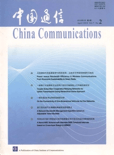
China Communications
Connecting Scholars to the Future of Information TechnologyChina Communications is a prestigious peer-reviewed journal published by the China Institute of Communications, dedicated to advancing the field of telecommunications and information technology. With an impressive Q1 ranking in both Computer Networks and Communications and Electrical and Electronic Engineering, this journal stands out as a leading source of cutting-edge research and innovative solutions in the engineering domain. The journal aims to provide a platform for scholars and practitioners to share their findings on the latest trends, technologies, and methodologies impacting the communications landscape in China and beyond. It is particularly noted for its high visibility in the academic community, as demonstrated by its Scopus rankings, which place it in the top percentiles for both fields. Through its commitment to quality content, China Communications contributes significantly to the advancement of knowledge, making it an invaluable resource for researchers, professionals, and students alike.

WIRELESS NETWORKS
Unveiling Insights in Wireless Networks and SystemsWIRELESS NETWORKS is a prestigious journal published by Springer, focusing on cutting-edge research in the domains of wireless communication, computer networks, and information systems. Established in 1995 and set to converge its influential contributions until 2024, this journal has rapidly ascended to a Q2 category ranking in the fields of Computer Networks and Communications, Electrical and Electronic Engineering, and Information Systems, reflecting its significant role in advancing knowledge and innovation—ranked 75th, 151st, and 84th respectively in their fields by Scopus. Researchers and professionals alike value its contribution to the discourse on wireless technologies, making it a vital resource for professionals and students eager to stay abreast of the latest trends and findings. Although it does not offer open access, the insights gleaned from its articles are invaluable for tackling the challenges of modern communications and ensuring the efficient use of wireless networks.

WIRELESS PERSONAL COMMUNICATIONS
Empowering the Future of Wireless Communication SystemsWIRELESS PERSONAL COMMUNICATIONS, established in 1994 and published by Springer, is a vital resource for researchers and professionals in the fields of Computer Science Applications and Electrical and Electronic Engineering. With an impressive impact factor, this journal has achieved a Q2 ranking in both relevant categories as of 2023, demonstrating its significance in advancing knowledge and fostering innovation in wireless communication technologies. The journal encompasses a comprehensive scope, covering topics such as mobile networking, signal processing, and communication protocols, making it essential reading for academic and industry stakeholders. Although primarily subscription-based, it remains committed to disseminating high-quality research that shapes the future of wireless technologies. Housed in the Netherlands, WIRELESS PERSONAL COMMUNICATIONS continues to foster a global dialogue among scholars and practitioners, contributing to the burgeoning field of personal and mobile communication systems.

IEEE Open Journal of the Communications Society
Empowering Innovation in Computer NetworksWelcome to the IEEE Open Journal of the Communications Society, a premier open-access publication dedicated to advancing the fields of computer networks and communications. Launched in 2020 by the esteemed IEEE-Institute of Electrical and Electronics Engineers, this journal operates under a commitment to disseminate high-quality, peer-reviewed research that fosters innovation and collaboration within the global communications community. With an impressive impact factor and currently positioned in the Q1 category of Time's rankings for Computer Networks and Communications (2023), the journal ranks 21st out of 395 in its field, placing it within the top 6% globally. It serves as a vital forum for researchers, professionals, and students, providing them with immediate access to pioneering studies and emerging trends. Being fully open access, all published articles are freely available to enhance the reach and impact of your research. Join us in exploring transformative ideas and technologies that shape the future of communications.